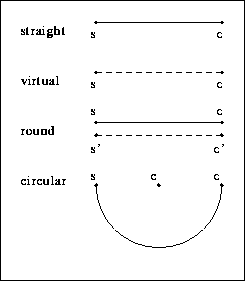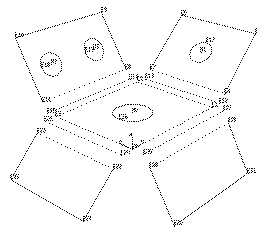


Previous: Geometric Model Up: 3D-Modeling for the Analysis of Range Next: Surfaces



At the moment four types of edges are used. They are very common and there exist methods to detect them in range data.



Round Edges are links between two surface patches, where we are not able to describe the interspace. But if we do no want to lose the information of those two surfaces being neighbors, we have to define an edge that consists of three parts:
There are only straight Round Edges, so the linked plane surfaces normally have a line of intersection.
As the used tools are able to compute center, radius and orientation of circles it is useful not to approximate circles by polygons. Circular Edges are represented by start and end vertex plus center. Circle parameters like radius and orientation are derived from this data.
An edge has two independent characteristics:
| edge | geometry | visibility |
|---|---|---|
| Straight Edge | straight | visible or detectable |
| Virtual Edge | straight | not visible |
| Round Edge | straight | detectable |
| Circular Edge | circular | visible or detectable |
As some combinations between geometric structure and visibility make no sense, it is not useful to model all of them. In case of the straight edges the meaning and also the structure of an edge is different for each type of visibility (table 1). Not visible circular edges make no difference to the straight Virtual Edge, because the geometry of invisible edges does not matter.
Round edges with circular geometry may be a useful addition, but as there was no example object with this characteristic, this edge type is not defined yet. It is very easy to add this edge type to the model, if necessary. So this is an example for the advantage of the modular modeling concept.
A special problem for the object recognition is the visibility of surface boundaries. The transition from a surface patch to the rounded intersection may be very smooth, see Figure 7. A similar edge is E4-E5 in Figure 8 where a cylinder patch turns into a plain patch. Although those edges are not visible in grey images, they are detectable in range data as they mark the border between surfaces of different characteristics. A problem is that they may be very inaccurate. Their position may depend on the point of view.


